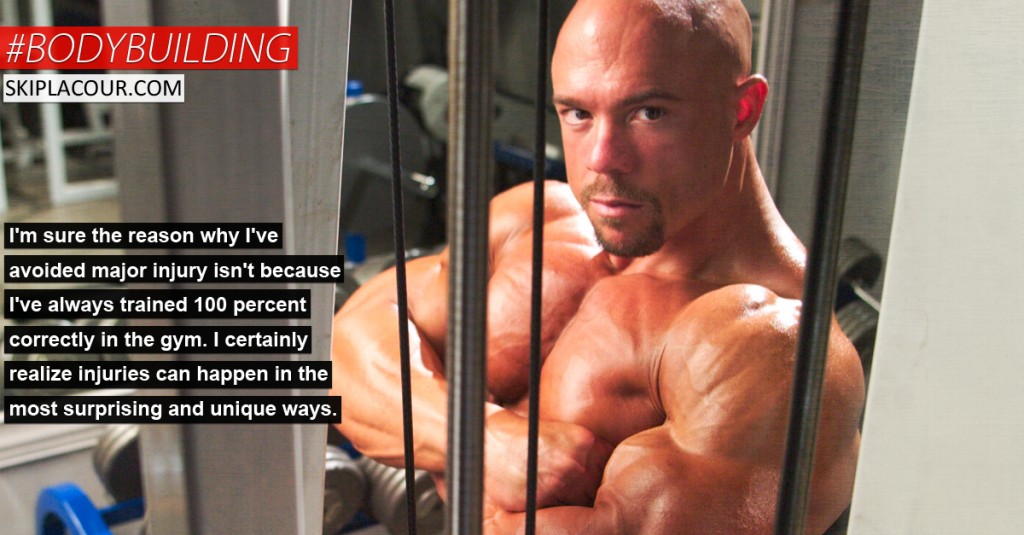When it comes to training injuries, I feel extremely fortunate that I have never experienced any injuries that have seriously hampered my bodybuilding efforts. I’m sure the reason why I’ve avoided major injury isn’t because I’ve always trained 100 percent correctly in the gym. I certainly realize injuries can happen in the most surprising and unique ways. For example, one person I know has been hurt getting off a stationary bike. I’ve also known people who have been injured lifting very light warm-up weight. The problem was that they lifted the lighter weight in a slightly different manner than they normally would during a regular, more challenging set.

This isn’t to say I haven’t had any minor, nagging injuries that I’ve had to deal with. Believe me, during my many years of training, I’ve definitely had my fair share of those types of injuries! How do I deal with those nagging, less-serious training injuries? First, I identify my overall training objectives. Then, I look for alternative ways to meet those objectives. As the saying goes, “There’s more than one way to skin a cat!”
Why are you weight training in the first place? To build muscle, right? When it comes to building muscle, you must overload the intended muscle group by training each set until absolute failure. In other words, you must keep on pounding out rep after rep until you simply can’t do anymore. And, as you probably already know, I firmly believe it is most efficient to train as heavily as possible while striving to achieve absolute failure during every set. Injuries definitely make it very difficult to train heavily at times but, despite the lighter weight you are forced to use, the injury shouldn’t prevent you from training every single set until absolute failure. If you can work out with weight lighter than you would normally use without further injuring yourself, you should do so. Even if the weight you use is just a fraction of your maximum weight—you should try to continue training. Ideally you should continue to train so you don’t have to spend additional time and effort making up the lost progress when the injury heals. You also want to avoid losing the momentum you’ve built before your injury occurred.
When I’m determined to keep training despite an injury, my strategy is to find the heaviest weight I can use during a particular workout without hurting myself further. With that compromised amount of weight—even if it’s considerably less than I’m accustomed to—I am certain to work each set to absolute failure. Doing so may take 15, 20, or even 25 reps when I would normally stay within the 4 to 6 rep range. The point is to let my mental strength compensate for what I’m lacking in physical strength. If you try this strategy and find yourself still hurting and unable to train, you may just have to “bite the bullet” and take as much time off as you need for the injury to heal.

